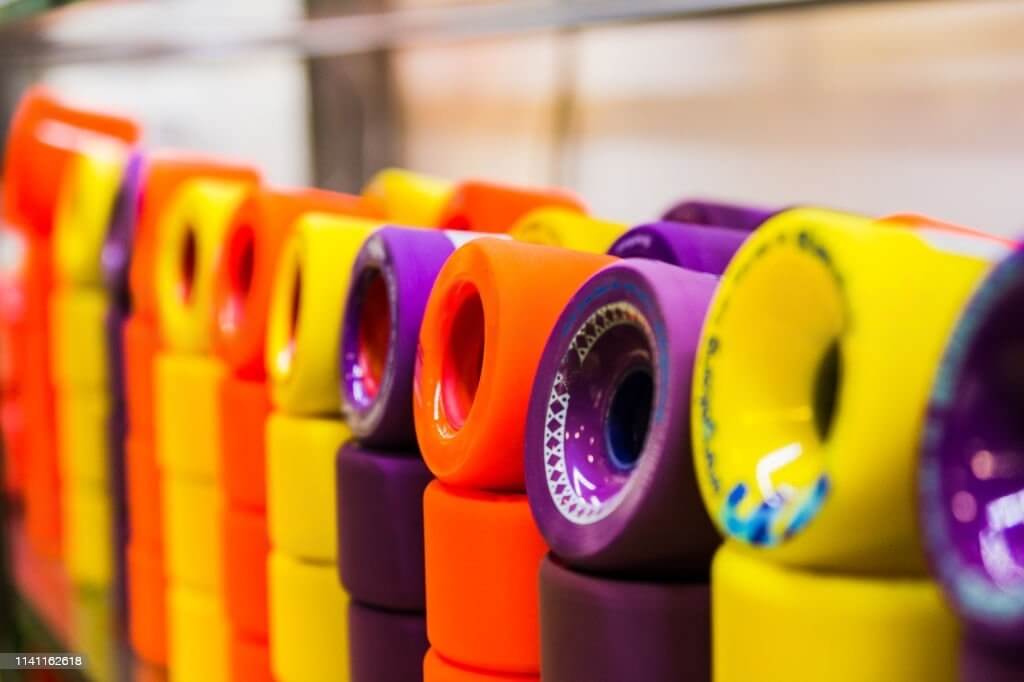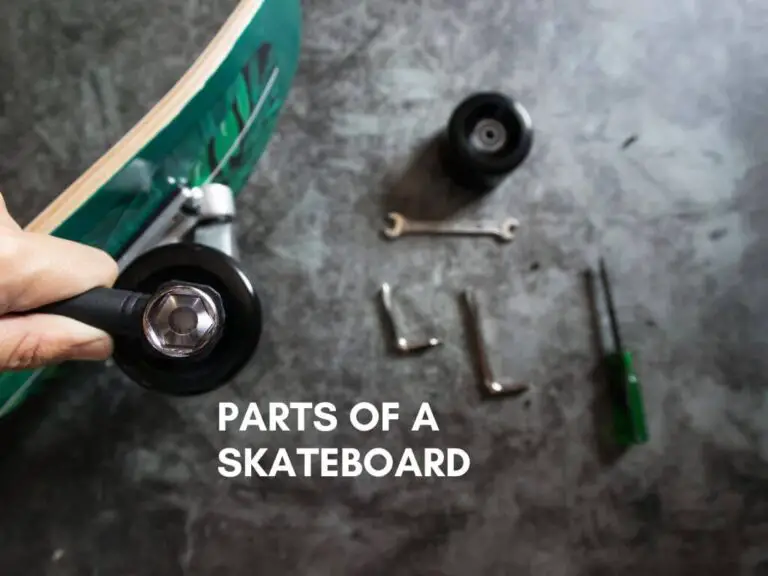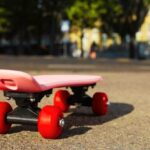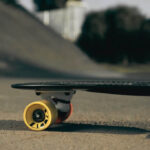Skateboarding has evolved over the years, with advancements in technology and the introduction of new materials. One of the key components of a skateboard is the wheels. Now, it’s time to introduce different types of skateboard wheels.
Skateboard wheels come in a variety of shapes, sizes, and materials. Each is designed to offer different benefits for different types of skateboarding. Whether you’re a street skater, a vert skater, or a cruiser, there’s a set of wheels that will help you get the most out of your ride.
Let’s take a closer look at skateboard wheels and what they provide for different types of skating. From soft to rigid, small to large, and everything in between, I’ll help you find the right wheels type for your style and preferences.
So, let’s roll on!
Different types of skateboard wheels
There are several types of skateboard wheels available on the market, each with its own unique features and benefits. Among them, three types of skateboard wheels are the most common and popular!
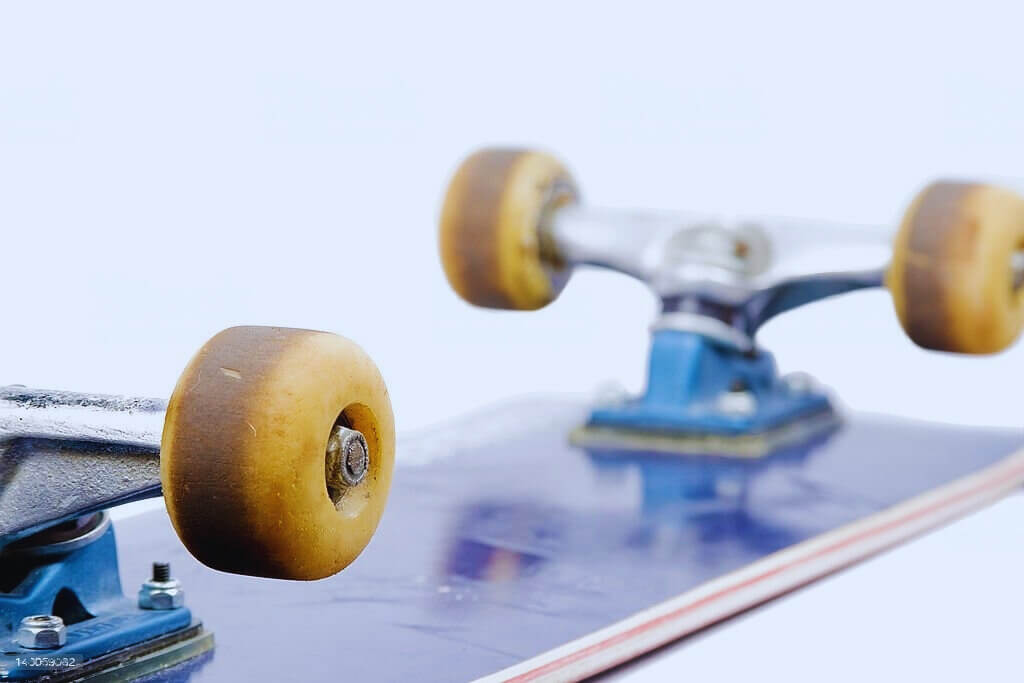
They are given below-
1. Park and Street Wheels
These are the most common type of skateboard wheels and are designed for street skating. They are designed for technical street skating and are an essential component of any skateboard setup. Choosing the right size, hardness, and shape of street wheels depends on your preferred skating style and the type of terrain you’ll be skating on.

Essential highlights
Size:
Compared to other types of skateboard wheels, street wheels are typically smaller. with a diameter ranging from 50-55mm. This smaller size allows for quick acceleration and easier maneuverability during technical tricks.
Shape:
Street wheels have a rounded shape, which allows for smooth and consistent rolling. The rounded shape also helps prevent wheel bite, which occurs when the wheel comes into contact with the board during turns and causes the board to stop suddenly.
Hardness:
Street wheels have a harder durometer rating than other types of skateboard wheels, typically ranging from 95A-101A. This hardness provides better durability and faster speed, but also means that they are less forgiving on rough surfaces.
Color and design:
Street wheels come in a wide variety of colors and designs, allowing skaters to express their personal style and preferences.
Surface:
Street wheels have a smooth surface. It allows for easy rolling and better performance during technical tricks. Such as flip tricks, grinds, and slides.
Material:
Street wheels are typically made of polyurethane, which provides a good balance between durability and grip. It is also lightweight and has good shock absorption, making it ideal for street skating.
Bearings:
Street wheels are designed to work with standard 608 bearings, which are the most common type of skateboard bearing. These bearings provide a smooth and consistent roll, which is important for street skating.
2. Skateboard cruiser wheels
Cruise skateboard wheels are typically larger and softer than traditional skateboard wheels. They are designed for cruising and commuting on streets and sidewalks. They come in different sizes, shapes, and materials, each with unique features to offer a smooth and comfortable ride.
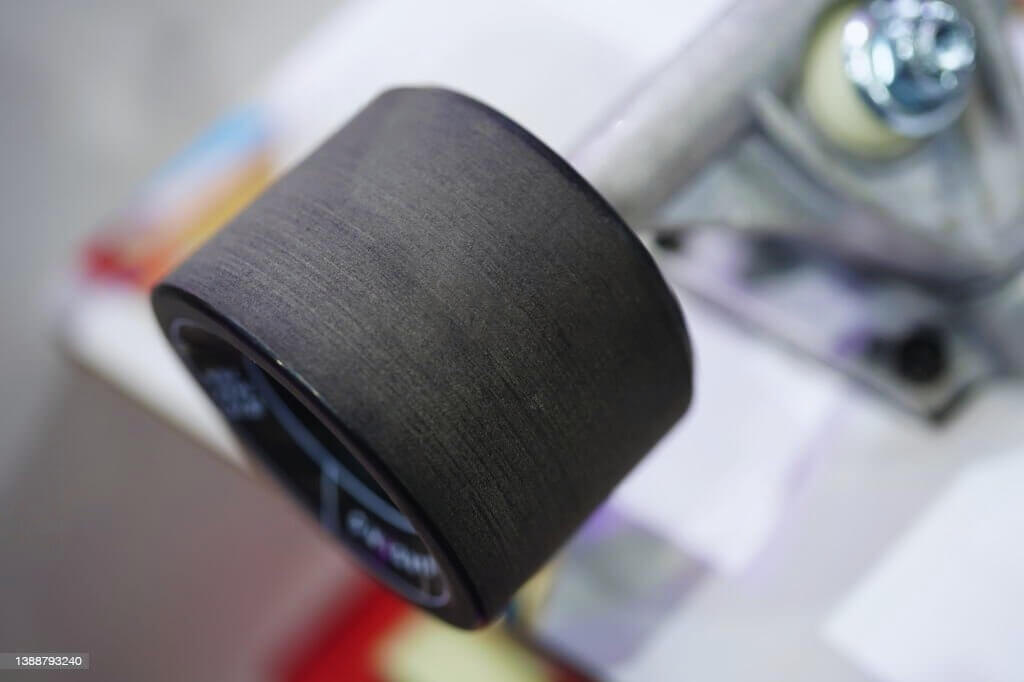
Important highlights
Some common features of cruise skateboard wheels include-
Size:
Cruise skateboard wheels typically range in size from 54mm to 65mm. Smaller wheels provide quicker acceleration and easier maneuverability, while larger wheels offer better stability and speed.
Shape:
The shape of a wheel affects its performance. Cruise skateboard wheels are usually rounded or conical. It has a slightly wider contact patch for better stability and control. Some wheels have a bevelled edge to reduce friction and improve slide.
Material:
Cruise skateboard wheels are usually made of polyurethane (PU), a durable and versatile material. It can be customized to fit different riding styles. Some wheels have a core made of plastic or metal to increase speed and reduce weight.
Durometer:
Durometer is the measure of the wheel’s hardness or softness. Cruise skateboard wheels usually have a durometer rating between 78A to 90A, with softer wheels providing more grip and smoother rides, while harder wheels are faster and more durable.
Colour and design:
Skateboard wheels come in various colours and designs, allowing riders to customize their boards to their preferences and style.
Contact patch:
The contact patch is the area of the wheel that comes in contact with the ground. Cruise skateboard wheels usually have a wider contact patch for better grip and stability, especially when carving and turning.
Lip shape:
Depending on the lip shape of a wheel, it will have a different rebound and grip. Rounded lips provide a smooth ride with less grip, while square lips offer more grip and a snappier rebound.
Bearing seat:
In a wheel, the bearing seat sits where the bearings are located. Cruise skateboard wheels usually have a standard bearing seat size of 8 mm, which fits most standard bearings.
Cutouts:
Some cruiser skateboard wheels have cutouts or grooves in the wheel’s core to reduce weight. Besides, it improves ventilation, keeping the wheels cooler during long rides.
Compatibility:
Cruise skateboard wheels are compatible with most standard skateboard trucks. But it’s important to ensure that the wheel size and shape fit your deck and trucks.
Speed:
Cruise skateboard wheels are designed for cruising and commuting. So they are not as fast as wheels designed for downhill or freeride. However, they still offer a decent speed and a smooth ride.
Noise:
The material and shape of the wheel affect the noise level. Cruise skateboard wheels are usually quieter than harder wheels, making them ideal for cruising in quiet neighbourhoods.
3. Longboard wheels
Longboard wheels are essential to a longboard setup, as they determine how smooth and fast your ride will be. They come in a variety of sizes, shapes, and materials. However, choosing the right ones depends on your riding style and preferences.
Important highlights
Longboard wheels have the following features:
Size:
Longboard wheels come in sizes, typically around 60mm to 75mm in diameter. The size of the wheels affects the speed and stability of your ride.
Shape:
Longboard wheels can have rounded or square edges and a more rounded or sharper lip. The wheels’ shape affects the board’s grip and slide characteristics.
Material:
They are typically made of urethane, a synthetic rubber with different hardness levels. More rigid urethane provides more speed, while softer urethane provides more grip.
Colour:
Longboard wheels come in various colours, allowing riders to customize the look of their board.
Weight:
The weight of longboard wheels can affect the board’s overall weight and how easy it is to carry or transport. Heavier wheels may provide more stability but they can be harder to maneuver. Besides, lighter wheels can be more responsive but may sacrifice some stability.
Durometer:
The hardness of urethane is measured on a scale from 0 to 100, with higher numbers being harder. It provides more speed and lower numbers being softer and providing more grip.
Core:
It is possible for longboard wheels to have a centre core or to be offset. Wheels with a centre core tend to be more stable and durable, while offset wheels are more responsive.
Contact patch:
The part of the wheel that makes contact with the ground is called the contact patch. A wider contact patch provides more grip, while a narrower contact patch provides more slide.
Lip profile:
The shape of the lip on the wheel affects how it grips and slides. Wheels with a round lip provide more grip, while wheels with a sharp lip provide more slide.
Surface texture:
Some longboard wheels have a smooth surface, while others have a rough texture. Wheels with a rough texture provide more traction and grip, while smoother wheels provide less friction and allow for more slides.
Wheelbase compatibility:
The size of your longboard’s wheelbase will affect the size of wheels you can use. Some longboard wheels are compatible with various wheelbase sizes, while others are designed for specific lengths.
Brand:
Different brands of longboard wheels may have unique features and characteristics that set them apart. Riders may prefer certain brands based on their experience and reputation within the longboarding community.
Bearing seat:
The bearing seat is part of the wheel where the bearings fit in. There are different types of bearing seats on different wheels, which can affect installation and performance.
Ventilation:
Some longboard wheels have ventilation holes or channels that help to reduce heat buildup. Also, improve the overall speed and performance of the board.
Price:
Longboard wheels can range in price from relatively inexpensive to quite expensive, depending on the brand, material, and features. Riders should consider their budget when choosing the right wheels for their longboard.
Skateboard wheels size chart

The shape of the wheel can also affect its performance. With smaller and narrower wheels being more maneuverable. Larger and wider wheels providing more stability and speed.
Keep in mind that the durometer refers to the hardness of the wheel, with higher numbers indicating a harder wheel. However, individual preferences may vary based on skating style and personal preference.
Let’s have a look on this chart-
| Wheel Diameter (mm) | Wheel Diameter (in) | Durometer (A) | Shape | Best Use |
| 49-52 | 1.9-2.0 | 99A-101A | Small & Narrow | Technical Street |
| 52-55 | 2.0-2.1 | 99A-101A | Small & Narrow | Street |
| 56-60 | 2.2-2.4 | 99A-101A | Medium & Wide | All-Around |
| 60-65 | 2.4-2.6 | 95A-99A | Large & Wide | Skateparks |
| 66-72 | 2.6-2.8 | 90A-95A | Large & Round | Vert/Big Bowls |
| 73+ | 2.9+ | 78A-85A | Large & Soft | Cruising/Downhill |
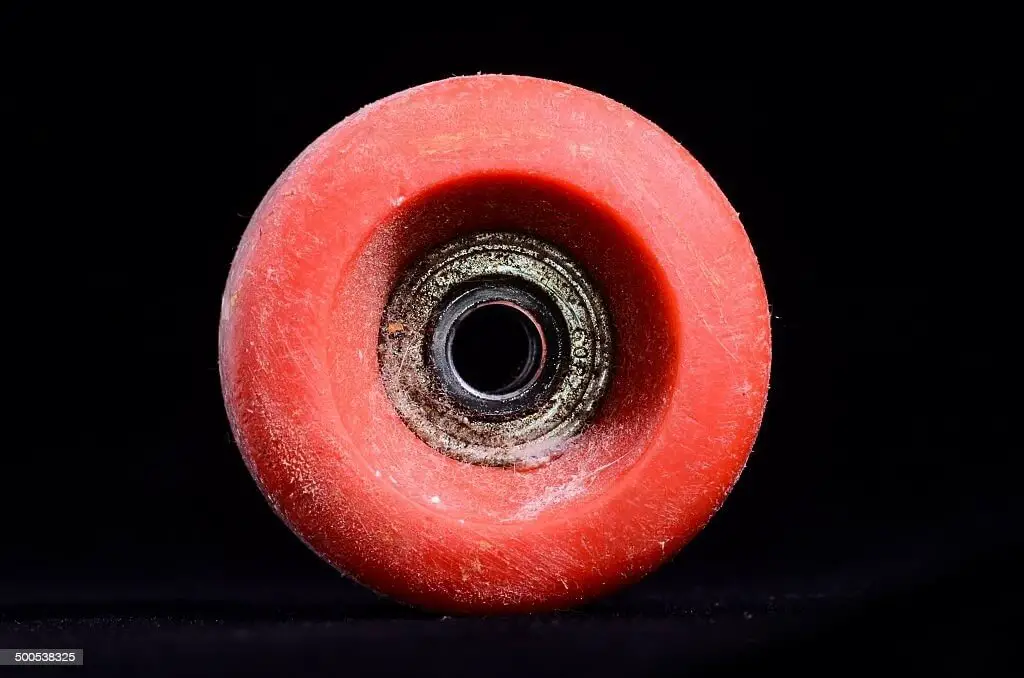
What is the difference between Softer wheels vs harder wheels
When it comes to skateboard wheels, the main difference between softer and harder wheels is their durometer or hardness. Softer wheels have a lower durometer, typically in the range of 75A to 90A. On the other hand, harder wheels have a higher durometer, usually between 90A to 101A or higher.
The main differences between softer and harder wheels are as follows-
Smoothness of ride:
Softer wheels provide a smoother ride because they absorb more shock and vibrations from the ground. This makes them ideal for cruising or riding on rough terrain. Harder wheels, on the other hand, are more rigid and can feel bumpier on rough surfaces.
Grip:
Softer wheels provide better grip because they conform to the surface they are riding on, creating a larger contact patch with the ground. This is especially important when riding on slippery surfaces such as wet or slick surfaces. Harder wheels, on the other hand, are better suited for smooth surfaces where a lot of grip is not necessary.
Speed:
Harder wheels are faster because they have less friction with the ground. This makes them ideal for skateboarding on smooth surfaces or performing tricks that require more speed.
Durability:
Harder wheels are more durable than softer wheels because they can withstand more wear and tear. Softer wheels tend to wear down faster and can develop flat spots, especially if they are used for sliding or performing tricks.
Maneuverability:
Softer wheels are more maneuverable because they provide more traction and grip. This makes them ideal for performing tricks that require a lot of control and precision. Harder wheels, on the other hand, are less maneuverable and may require more effort to perform certain tricks.
Noise:
Softer wheels tend to be quieter than harder wheels. Because they absorb more shock and vibrations from the ground. Harder wheels, on the other hand, can be noisier because they create more friction with the ground.
Weight:
Generally, soft wheels are heavier than harder wheels because they have more material and are denser. This can affect the weight of the skateboard and the skater’s ability to perform certain tricks.
Comfort:
A softer wheel absorbs more shock and vibration from the ground. This can reduce fatigue and discomfort, especially during longer rides. Harder wheels, on the other hand, can be less comfortable because they transmit more shock and vibrations to the rider’s feet and legs.
Terrain:
It is better to ride on softer wheels on rough terrains, such as uneven pavement or cobblestones. Since they absorb shock and vibration better. Harder wheels, on the other hand, are better suited for smooth surfaces. Such as skateparks or indoor surfaces, because they provide less grip and allow for more speed.
Personal preference:
Ultimately, the choice between softer and harder wheels comes down to personal preference. Some skaters may prefer the smooth ride and grip of softer wheels. Besides, others may prefer the speed and durability of harder wheels.
So, it’s essential to try out different types of wheels. Also, find the best ones for your skating style and needs.
Skateboard Durometer vs Diameter
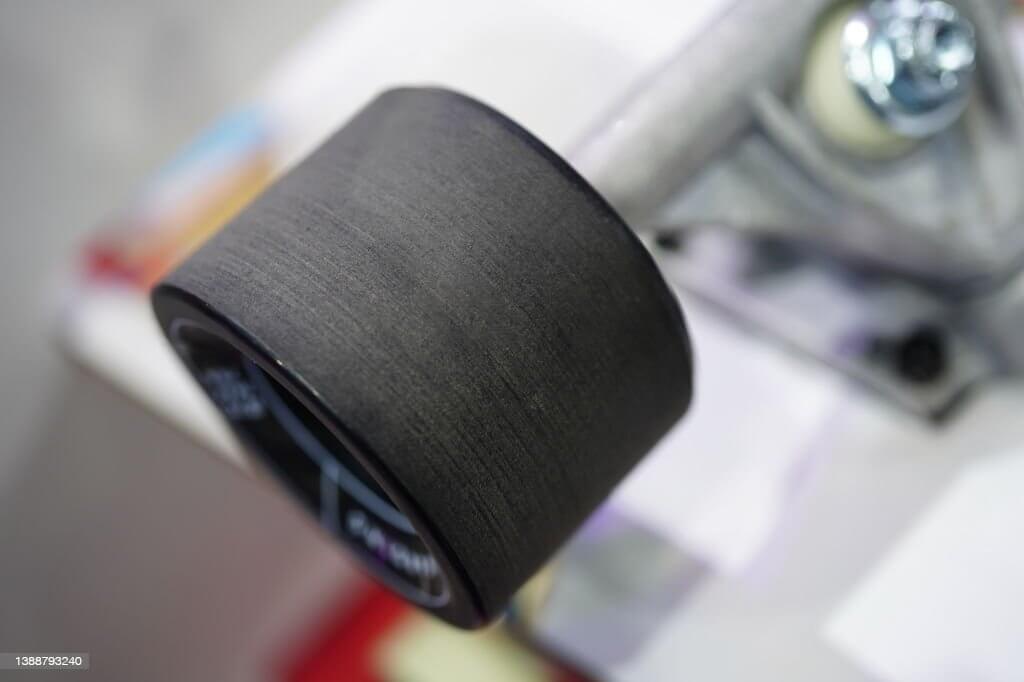
Skateboard wheels are an essential part of a skateboard setup, and two important factors to consider when choosing wheels are the durometer and diameter.
Here are the differences between the two:
| Parameter | Skateboard Durometer | Skateboard Diameter |
| Definition | The hardness of the wheels, measured in durometer (a unit of measure) | The size of the wheels, measured in millimeters (mm) |
| Importance | Affects the grip and slide of the wheels on different surfaces | Affects the speed and stability of the skateboard |
| Range | Typically measured on a scale from 1 to 100A, with lower numbers being softer and higher numbers being harder | Typically measured in millimeters, with smaller wheels being slower and more maneuverable, and larger wheels being faster and more stable |
| Terrain | Softer wheels are better for rough or uneven terrain, providing better grip and shock absorption | Smaller wheels are better for street skating, while larger wheels are better for cruising or longboarding on smooth surfaces |
| Tricks | Softer wheels are better for street and technical tricks, allowing for more control and precision | Larger wheels are better for vert skating and longboarding, providing more speed and stability |
| Wear and tear | Softer wheels wear down faster, especially on rough surfaces, and may need to be replaced more often | Larger wheels can last longer and require less maintenance, but may be more prone to flat spotting |
| Personal preference | Some skateboarders prefer softer or harder wheels depending on their skating style and personal preference | Some skateboarders prefer smaller or larger wheels depending on their preferred terrain and style of skating |
How do I choose skating wheels?
Choosing the right skating wheels depends on several factors, including the type of skating you do, your skill level, and the terrain you’ll be riding on. Here are some key things to consider:
Wheel Size:
- Diameter: Measured in millimeters (mm), skateboard wheels typically range from 50-75mm. Smaller wheels (50-54mm) are ideal for street skating and tricks, as they’re lighter and easier to control. Larger wheels (56-75mm) offer better speed and stability, making them great for cruising, commuting, and bowls.
- Width: Wider wheels (up to 60mm) provide more grip and stability, especially on rough surfaces. Narrower wheels (30-40mm) are lighter and faster, but offer less grip.
Wheel Hardness:
- Durometer: Measured on the A scale (75A to 105A), higher numbers indicate harder wheels. Softer wheels (75A-85A) offer more grip and comfort on rough surfaces, but wear down faster. Harder wheels (95A-105A) are faster and more durable, but provide less grip and can be harsher on rough surfaces.
Riding Style:
- Street Skating: Smaller and harder wheels (52-54mm, 99A-101A) are ideal for tricks and technical riding.
- Cruising/Commuting: Larger and softer wheels (56-60mm, 87A-95A) offer better comfort and grip on rough surfaces.
- Bowl/Ramp Skating: Large and soft wheels (60-75mm, 80A-90A) provide grip and stability for carving and pumping in bowls and ramps.
Conclusion
Ultimately, choosing the right skateboard wheels for your needs can make a huge difference in your overall skating experience. With so many different types of skateboard wheels, it’s important to consider factors such as size, shape, hardness, and material before making a purchase.
No matter your level of experience, having the right wheels will help you achieve better stability, control, and speed. So, take the time to do your research and find the right skateboard wheels that work for you and your skating style.
FAQ’s
Can You Use Longboard Wheels on a Regular Skateboard?
Well, it is technically possible to use longboard wheels on a regular skateboard, but it is not recommended. Longboard wheels are typically larger and softer than skateboard wheels. It can affect the performance and stability of the skateboard.
What skateboard wheels should a beginner get?
For beginners, a medium-sized wheel between 50-55mm is recommended. For durometer, beginners should choose wheels with durometers between 78A and 88A. It’s better to have softer wheels for smoother rides, and harder wheels for tricks and slides.
Are harder skateboard wheels faster?
Yes, harder best skateboard wheels are typically faster than softer ones on smooth surfaces. But this depends on various factors, including the size and shape of the wheels, the type of bearings, and the surface you are skating on.
What type of wheel is best for skateboarding?
The best type of wheel for skateboarding depends on the terrain and style of skating. For street skating, hard wheels with a diameter of 50-56mm are recommended as they provide better control and speed.
Can I mix different durometer wheels on my skateboard?
While it’s not common, you can mix different durometer wheels on your skateboard. Keep in mind that having varying levels of grip and slide can affect your riding experience and make your board less predictable.

